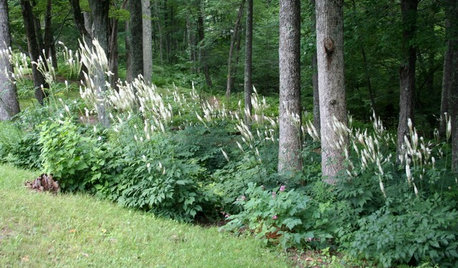Preserving a garden
inkognito
20 years ago
Related Stories

ARCHITECTUREHouzz Tour: Preserving an Untouched Hollingsworth Gem
Heritage status and an architecture-loving homeowner keep a midcentury modern ranch’s spirit alive
Full Story
PRODUCT PICKSGuest Picks: Canning, Preserving, Steaming, Dehydrating
20 products to help make fall produce last through the season and beyond
Full Story
GARDENING GUIDESPacific Northwest Gardener's November Checklist
Set a festive mood with a container garden while preserving and protecting your landscape and water features
Full Story
GARDENING GUIDESSpring Citrus Care Reaps Months of Sweet Rewards
Learn how to tend citrus trees in spring and ways to preserve their delicious fruit
Full Story
GARDENING GUIDESGreat Design Plant: Asclepias Incarnata for a Butterfly Garden
Beautiful swamp milkweed makes it easy to help monarchs and other pollinators in eastern U.S. gardens
Full Story
EDIBLE GARDENSHow to Grow Your Own Peaches and Nectarines
Make gardening a little sweeter with these juicy fruits, which you can eat after plucking or preserve for later
Full Story
SAVING WATER11 Ways to Save Water at Home
Whether you live in a drought-stricken area or just want to help preserve a precious resource, here are things you can do to use less water
Full Story
GARDENING GUIDESGreat Design Plant: Chamaecyparis Nootkatensis
Alaska cedar brings an element of sculpture to the garden
Full Story
MOST POPULARHow to Start a Cool-Season Vegetable Garden
Late summer and late winter are good times to plan and plant cool-season crops like salad greens, spinach, beets, carrots and peas
Full Story
GARDENING GUIDESGreat Design Plant: Actaea Racemosa
Elegant flowers top black cohosh in summer woodland gardens
Full StoryMore Discussions






spectre
spectre
Related Professionals
Aurora Landscape Contractors · Fountain Valley Landscape Contractors · Kailua Landscape Contractors · North Richland Hills Landscape Contractors · South Lake Tahoe Landscape Contractors · View Park-Windsor Hills Landscape Contractors · Ferguson Landscape Contractors · Lincoln Siding & Exteriors · Oak Creek Siding & Exteriors · Dallas General Contractors · Makakilo General Contractors · Mount Vernon General Contractors · Norridge General Contractors · Rohnert Park General Contractors · Troy General Contractorsspectre
ginger_nh
mjsee
phdnc
SeniorBalloon
inkognitoOriginal Author
phdnc
phdnc
mjsee